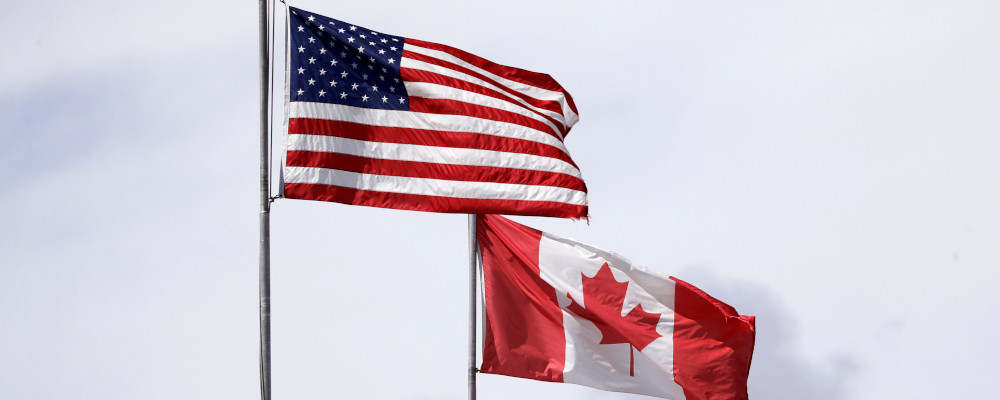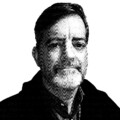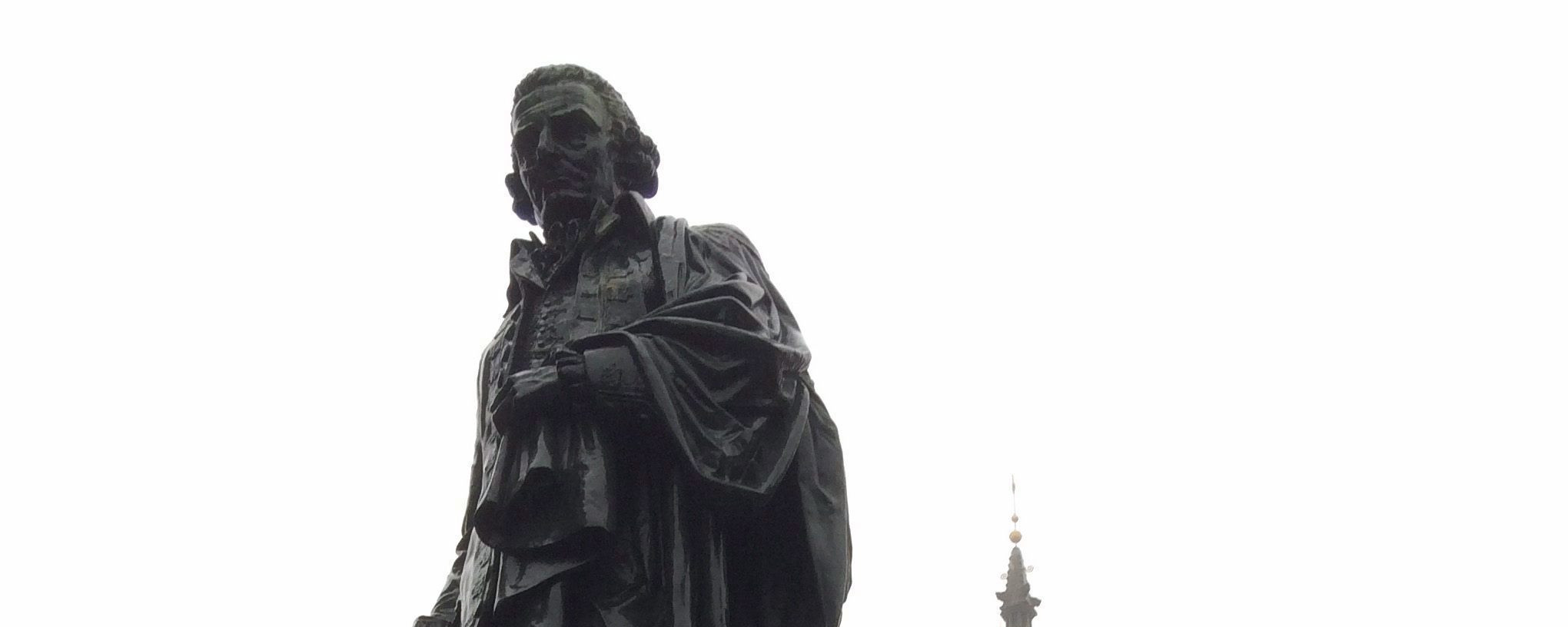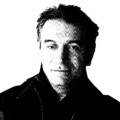Canadians’ ignorance of our own history is a pervasive and regrettable problem. The Hub is pleased to play a small part in attempting to turn this tide by presenting a weekly column from author and historian Antony Anderson on the week that was in Canadian history.
January 16, 1965: Prime Minister Lester Pearson and President Lyndon Johnson sign the Auto Pact
On the surface, they couldn’t be more different, the Oxford-educated diplomat and the down-to-earth Texan.
Greeting a head of state to ratify a major trade agreement, Pearson stepped off the plane dressed in a formal dark suit with a classic homburg hat. Having scheduled this bilateral meeting at his ranch, Johnson showed up in casual work gear. He considered the Canadians friends so he paid them the compliment of dispensing with protocol. Getting his PMs mixed up, Johnson stood in front of the press and called Pearson “Mr. Wilson” (after the British PM Harold). No offence intended and Pearson, ever the pro, took none. The American and Canadian entourages were marshaled into a convoy of helicopters, jeeps, and golf carts and whisked across the desert landscape to the ranch.
Along the way, Johnson invited Pearson to do shots of bourbon. The Canadian declined. At one roadside pit stop, the president then invited the prime minister to join him taking a leak out in the open. Again, Pearson declined and no doubt, graciously so. The president’s language was laced with profanity. Pearson described it later as merely “sulfurous” and he of course refrained from using any foul language in kind.
At the ranch, Johnson darted like a dragonfly, taking endless calls, cutting off conversations to watch the multiple TV sets to suddenly sharing secret communiques with his Canadian guests who simply had to go with the manic flow. Such are the privileges of the superpower, and such are the limitations of the middle power status. Johnson pressed Pearson several times for some kind of Canadian military commitment in Vietnam. Once again, Pearson had to decline. He managed, as every PM must, a fine balancing act of accommodation and deflection. Fortunately, he had some credit in the bank. Canadian military observers were already in Vietnam monitoring a ceasefire accord, almost worthless, through the International Commission for Supervision and Control, largely ineffectual. The year before, Canada had moved quickly to send peacekeepers to keep the lid on Cyprus for which Johnson had thanked Pearson.
Despite their jarring differences in style and temperament, the two men were professional politicians. They didn’t need to be friends or even like each other. They needed to serve their country’s mutual interests. The Auto Pact was one of those sweet spots in the relationship that delivered a win-win for Canada and the United States—a trade agreement that proved very good for business and which ensured a secure place for the Canadian auto industry in the larger North American marketplace. The details had been worked out by officials. The leaders were there for the signatures and the cameras, though Pearson would need Johnson to expend some time and attention to ease passage through the labyrinthine tunnels of Congressional approval, and this the president did.
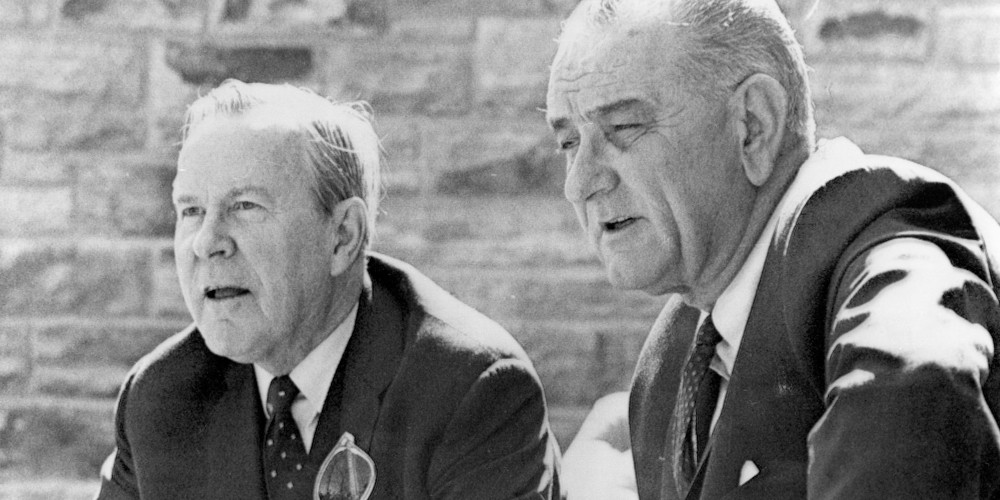
This harmony would be shattered in just three months when Pearson traveled back to U.S. soil to accept a peace award in Philadelphia. In his speech, he praised American intentions and goals in Vietnam, expressed Canada’s support for the larger strategic goal of containing communism, and then made a tentative tactical suggestion that Washington consider, at some point, a pause in the current bombing campaign to encourage the North Vietnamese to start peace talks. He thought he was offering sensible advice from a supportive neighbour who was a tad concerned about the terrifying escalation taking place. Johnson didn’t see it that way.
The president invited Pearson to his country retreat, Camp David, and then after a tense, surly lunch —where one observer was troubled to see Johnson taking only one Bloody Mary instead of his customary three—Johnson took Pearson outside to the terrace. He screamed. He raged. He wouldn’t let Pearson get in a word in. He even grabbed Pearson by the lapels and is thought to have exclaimed at one point, “You pissed on my rug”. Pearson—again the professional diplomat—did not appear to take offence.Lawrence Martin The President and the Prime Ministers (Doubleday Canada 1982) p. 2
He knew he had knowingly committed a terrible faux pas that any entry-level diplomat would shrink back from in horror: you do not appear to question i.e. criticize, especially in public, another nation’s foreign policy on their home ground. Pearson however felt compelled to commit such a blunder to save Johnson from being overwhelmed by the hawks in his administration. Flailing in vain for victory and release, the beleaguered Johnson saw himself as a moderate fighting a vital war for his fellow allies who largely and selfishly wanted nothing to do with the spreading quagmire.
After the one-way shouting match, Johnson and Pearson returned from the terrace, faced the press in a distinctly cool atmosphere, claimed they had conducted a friendly exchange of views, and then went their way. The two leaders, ever professional, remained civil but no more than that for the rest of their tenures. Johnson would later complain to the Canadian ambassador that “You screwed us on the Auto Pact!” but he never did anything to damage it.

This incident brings to mind a quip Pearson apparently made at some point in his long career dealing with Washington, that they were just the “show-biz side” of a continental relationship so vast and intricate that the big economic and cultural wheels just keep on churning no matter who is in power; sometimes with more noise and friction, sometimes like silk, but the churning does not stop.
Perhaps this is why historians and journalists keep quoting the eternally apt insight from Robert Thompson, MP and federal leader of the Social Credit Party in the 1960s: “The Americans are our best friends, whether we like it or not.” Most of the time we like it. When we don’t, we know the shouting match will eventually end. Neither of us is going anywhere.
Recommended for You

The Weekly Wrap: It’s time to cut through Chesterton’s Fence and implement sweeping reform in Canada

Has the Left lost its masculine energy?

Ginny Roth: J.D. Vance, Pierre Poilievre, and how they slice their economic pie

David Polansky: As President Biden leaves the race, will the Democratic Party hodgepodge hold?

